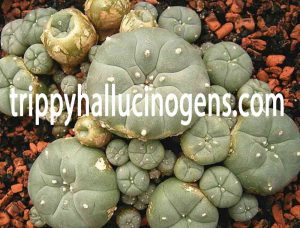In Washington’s Skagit Valley, the morning of summer is largely marked by the first ripe, red strawberry. Just off of State Route 20 headed west out of Burlington sits the Skagit Valley position of Viva granges. Viva granges is a nonprofit that helps new and limited– resource growers with access to land, outfit and further, and this point is home to 18 incubator granges and a half– acre pupil ranch. Deals and education director Katherine Myrvold teaches scholars in the Practicum in Sustainable Agriculture course how to grow numerous effects then, including two beds of strawberries.Strawberries are one of numerous crops that frequently use plastic mulch during their growing season. Mulching is the process of covering the earth around a factory with commodity to help it grow. Myrvold says that for the strawberries at Viva granges, plastic mulch — long, thin wastes of polyethylene — serves two main purposes.“ It adds heat to the soil, which is really salutary for a heat– loving crop like strawberries. And it also helps with weed repression, which is always a challenge in organic product. ”But there’s a critical strike. There are no constantly accessible mechanisms for sustainably disposing of plastic mulch film at the end of its life. What’s more, exploration shows that renegade pieces of this plastic can break down into the soil and aqueducts as microplastics — pieces of plastic lower than five millimeters long that present serious health and ecosystem enterprises.
“ We always talk about this on the pupil ranch — it’s kind of like the dirty secret of organic husbandry and husbandry in general, is just the quantum of waste — the quantum of single– use plastic, ” says Myrvold. “ So, that’s commodity that we ’re veritably open to chancing an volition to. ”
But the current druthers also have downsides. Myrvold says they tried using paper mulch one time, and it tore too fluently, was n’t flexible enough and large swaths of it blew down in the wind.
“ It did n’t get the job done at that time, ” says Myrvold.
A new$ 8- million USDA entitlement will allow experimenters from Washington State University( WSU) to probe end– of- life recycling results for plastic mulch, as well as effective biodegradable mulch options. Experimenters across several institutions and assiduity mates, similar as Natureripe and Driscoll’s, will share, with contributors gauging both beachfronts. Although numerous crops use plastic mulch film, this design will concentrate on a fruit that uses it considerably the strawberry.
ADS
The ubiquity of plastic
The use of plastic in husbandry, known as “ plasticulture, ” is extensive. The United States husbandry sector uses one billion pounds of plastic mulch every time. When it comes to disposal, the vast maturity of this film gets taken to the tip or is buried or incinerated.
When the use of plastic mulch began in the 1950s, it proved to be immensely helpful to farmers. The benefits include enmeshing heat for faster growth, retaining toxin and suppressing weeds. It has also proven to be the most provident option for people growing on a marketable scale.
Plastic mulch is made out of polyethylene, or PE. PE is recyclable, but utmost plastic mulch film isn’t reclaimed because of a many crucial hurdles. “ There’s quite a many effects against you, ” says Karl Englund, a exploration professor in WSU’s Civil and Environmental Engineering Department, who’s leading the recycling element of WSU’s entitlement exploration.
Recycling plastic mulch isn’t as easy as putting your ménage recycling in a blue caddy.
Plastic mulch film spends its life in the dirt, and impurity is a real handicap. Recycling is generally only possible if pollutants make up lower than 5 percent of the weight of plastic mulch. But by the end of the growing season, the weight of plastic mulch can increase by as important as 80 percent — all directly due to dirt and organic matter.
also, harmonious assiduity pathways for recovering plastic mulch do n’t live yet.
still, also who cares if you clean it? ” says Englund, “ If there’s no avenue for it to go. “ You make an assiduity that’s out there that can handle this or at least a group that can say ‘ I ’ll take this but you got to clean it, ’ I suppose you ’ll launch to see further and further people starting to clean it. That’s the stopgap. ”
ADS
Englund and his platoon will probe three different avenues for recovering plastic mulch lifted from strawberry fields through pyrolysis, for use in road asphalt and as implicit added material to sundeck boards. They ’ll use mulch from strawberry fields at different mate spots across the US in Florida, California, Nebraska and Washington and at different situations of cleanliness. Strawberries are an ideal crop to concentrate on for this exploration because they ’re a popular thing to grow across the country, gauging colorful soil systems, climates and growing conditions.
But the discussion about how to deal with end– of- life accoutrements needs to start in their original design, says Englund.
“ It’s a quagmire, the position we put ourselves into with these specialty polymers, ” says Englund. “( There’s) a lot of design that goes into them and not a design for deconstruction. We’ve to start designing this stuff more. ”
In the fields
The bulk of US strawberries are grown in California further than 40,000 acres this time. Plastic mulch used for strawberries and other crops has come a problem, still, as plastic pollution can insinuate aqueducts.
“ There’s a lot of agrarian fields right next to the seacoast. And so we try to work really nearly with ag stakeholders to look at precautionary strategies that can help reduce the quantum of plastic that can escape out into the ocean, ” says Jazmine Mejia- Muñoz, water quality program director at the California Marine Sanctuary Foundation( CMSF), on detail for NOAA’s Monterey Bay National Marine Sanctuary. By working with experimenters and major berry directors in the area, the associations are trying to break the link between agrarian plastic use and plastic marine debris.
Microplastic pollution is a global problem. Although it’s delicate to estimate the true extent of the problem, it’s allowed that there are between 50 trillion and 75 trillion pieces of plastic or microplastic in the ocean. While mulch is far from being the only contributor to this issue, agrarian plastics are clearly a factor. Mulch that breaks down over time could be part of the result, although a main handicap associated with the soil- biodegradable plastic mulch presently on the request is that it does n’t bear constantly across different climates and field conditions. CMSF is uniting with the WSU platoon to run trials for biodegradable mulch in strawberry fields. It’s also working with California Sea Grant to probe new technology to remove impurity from the plastic film without creating wastewater, which would prop in sweats to reclaim the material.
The future of mulch, says Mejia- Muñoz, likely wo n’t align with just new plastic recycling strategies or biodegradable mulch. It’s going to depend on a combination of different strategies to produce a path forward that works for different ranch systems with different requirements. It’s not only about chancing new pathways that work they also have to be effective and scalable.
“ In order for the technology to be enforced, it has to be feasible, and it has to make sense with the system and the economics around it, ” says Mejia- Muñoz.
Should farmers just be jilting plastic fully? It’s not nearly that simple, says Mejia- Muñoz.
“ farmers then are responsible for meeting food demand, and they feed the world, ” says Mejia- Muñoz. “ And in order to meet this demand, they calculate on really effective technology. ”
Beyond plastic
There are several druthers to plastic mulch but none can completely fill plastic’s shoes just yet.
Soil- biodegradable plastic mulch film is formerly on the request, but there are notable obstacles. It degrades inconsistently across varying field conditions and can not be used for organic husbandry if it isn’t 100 percentbio-based, which is needed in order to be used in pukka organic operations in the US.
Last time, trials began at WSU and North Dakota State University to determine the most effective formula of hydromulch, a material made of paper, water and tackifier. Hydromulch could contribute to a unrestricted– circle system in husbandry, if the boxes used to transport yield could also come the paper demanded to make the hydromulch.
Katherine Myrvold of Viva granges says that despite its lower than satisfactory experience with paper mulch in the history, Viva granges would be open to new ways or tools. She ’d really like whatever the volition is to add heat to the soil — in the Pacific Northwest climate, the heat boost really makes a difference.
“ We’d love to try it again, if there’s a newer variety that would last better through the season, ” she says.
Myrvold thinks others would be open to it, too.
“ I know that there are a lot of people who are working in organic husbandry for all kinds of values–affiliated reasons, ” says Myrvold. “ It seems like it would be a natural fit to extend that into making an trouble to reclaim the more extravagant factors of what you use on your ranch. ”



